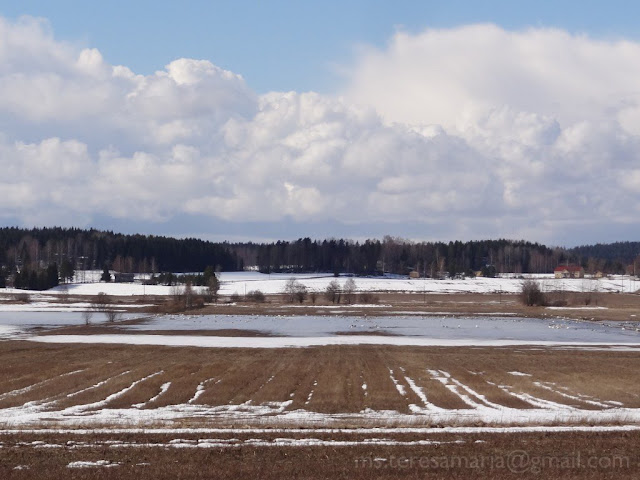
When you live in a ‘house with
character’ there will always be something to worry about. One odd corner or
another of your old cottage will always be in need of some cleaning, painting,
fixing or another, more thorough form of shake-up. I generally leave the worrying
to my husband but there’s been one question that’s been a concern to me rather
than him: how much radon do we inhale annually?
Radon is a cancer-causing
radioactive gas that cannot be detected by any of the human senses. It is created
by the natural breakdown of uranium in soil, rock and water and it moves up
through the ground to the air we breathe. If the foundation of a building that
happens to be located in a risky area is not properly radon-protected by ventilation or insulation, the gas will enter your home and, in the case of insufficient indoor ventilation, it may remain trapped there causing health-threatening radiation
levels.
Finland has a population of some 5.4
million but even here it is estimated that radon causes some 300 deaths from
lung cancer annually. In the UK where the average radon level is lower, the
figure is 1,100 and in the USA as many as 21,000 people die annually because of it. That is certainly reason
enough to have your house ‘radon-detected’ if you are in doubt.
According to the Finnish Radiation
and Nuclear Safety Authority (STUK), our indoor air radon levels are the
highest in Europe and probably in the whole worlds. This is because of our
geology, construction technology and climate. Our rock and soil are of granite and
richer in uranium than the average around the globe. The highest concentrations
are found on sand and gravel ridges as it is easy for the gas to rise through
them. Moreover, radon levels are generally the higher the colder the weather
is. That is why the measurement must be made during the cold season.
In our country, the building
regulations have instructed at least since 1992 to take radon into account in the design and construction of
all new buildings. The situation is most likely rather similar elsewhere, too,
as well as that for the older houses: you will find some indication from the
radon maps published by the authorities (e.g. STUK in Finland, the Health Protection Agency in the UK and the Environmental Protection Agency in the USA)
but the only sure way to know is to measure.
So we ordered a home measurement kit
from STUK. The detector is a small black plastic canister with a polycarbonate film inside and a few holes on the top for the radon to penetrate. The radiation will leave marks that can be analysed from the film in a laboratory. One detector costs about 43€ including the analysis and report (the current UK price is approx. 50£).
In smaller apartments one detector is enough
but in larger ones at least two are required. If your house has several floors the
detectors should be placed in the ground floor (not the basement unless someone
lives there) and in the first (and every other) floor at the height of about one metre and kept on
the same spot for at least two months, preferably three.
We let the detectors be from the end
of November until the end of February, then posted them to STUK and less than two weeks
later we were safe. The results
revealed radon levels far below the national action level of an annual average
of 400 becquerels (Bq) per cubic metre of air, even considerably lower than the target
level of 200 Bq and even lower than the target level of 100 Bq recommended in some other, less ‘uranium-rich’ countries such as the UK.
Our readings were 90 in the
downstairs living room where the hard wood floor has never been removed to see
what’s beneath since it was built probably in the late 1930s or early 1940s,
and 80 in the upstairs hall in the older part of the house that has been
completely rebuilt.
Had the concentrations been higher, I –
for once – would have had a plan. The easiest way to get rid of this dangerous gas in
older buildings it to install a radon fan down through the basement to suck the
radon from under the house and pipe it up either through the roof or out-of-doors by the side of the house.
Our electrician recently told he had built and installed a radon fan for his house at the cost of less
than 100€ but he is a professional in electrical installations. I guess for a
layman the cost for a ready-made appliance and its installation would be a few, say 10 times more but even if it were 20 or 30
times more that is nothing for eliminating one deadly carcinogen from your daily life.
Radon
can also enter your home through well water if you have a drilled deep well.
Luckily our well is built on a natural spring so we do not have to worry about the well, at least as regards radon.










